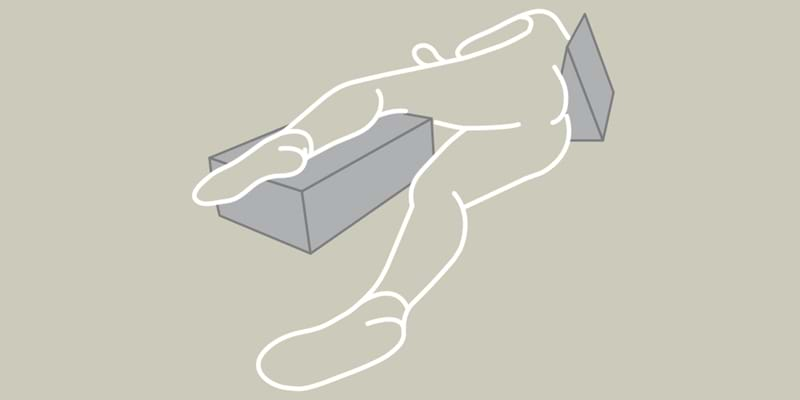
Positioning for Intimate Care
Assisting with intimate care and toileting of a bedridden client can be a challenging task that often requires two caregivers. Using this simple positioning method, it is possible to improve work health and safety and the client's comfort.
10. October 2019
By: Physiotherapist, Henrik Rasmussen
With clients and patients who are very immobile, the task of performing intimate care and toileting in bed is often a two-person job. It can be very physically demanding for carers as one tries to keep the client stable in the side-lying position, while the other is washing and cleaning the client. This can also be a painful experience for the patient or client who is in an uncomfortable position and is being grabbed.
If the client also suffers from cognitive challenges, such as dementia, it may add to the stress of the situation. The client may have difficulty understanding what is going on, which can cause them to resist physically or verbally, creating an even more straining situation for both carers and client.
Nevertheless, intimate care is a task that many health professionals perform several times a day, e.g., for clients using diapers. If the client is not cooperative or has only limited mobility, the task is straining for caregivers, as they compensate for the client's lack of resources with their own body.
In these cases, positioning can both improve the working environment of the caregivers and ensure that the client lies in a stable and comfortable way without painful twists in the hip or lower back at the same time.
How it is done
For this positioning method, the clients' legs are placed on a firm, tissue-relieving positioning cushion - LEJRELET Pad High. The cushion is designed based on the anatomy of the adult pelvis which ensures that the hip is in a neutral position when the leg is placed on top of it. Next, a LEJRELET Wedge cushion is placed in front of the client's chest for them to hold on to and be supported by. Allowing the client to lean forward a bit will create the most stable position. If the client has a tendency to roll backwards, you can also place a Wedge in the upright position behind the client, which will prevent them from falling backwards towards the caregiver behind them.
Both cushions are slip-resistant, meaning that they will not move around on the sheet even when the client places pressure on it.


This positioning method ensures a pain-free and comfortable position for the client, opens the pelvis region to provide staff with optimal conditions for intimate care, and ensures the work health and safety of carers as well.
